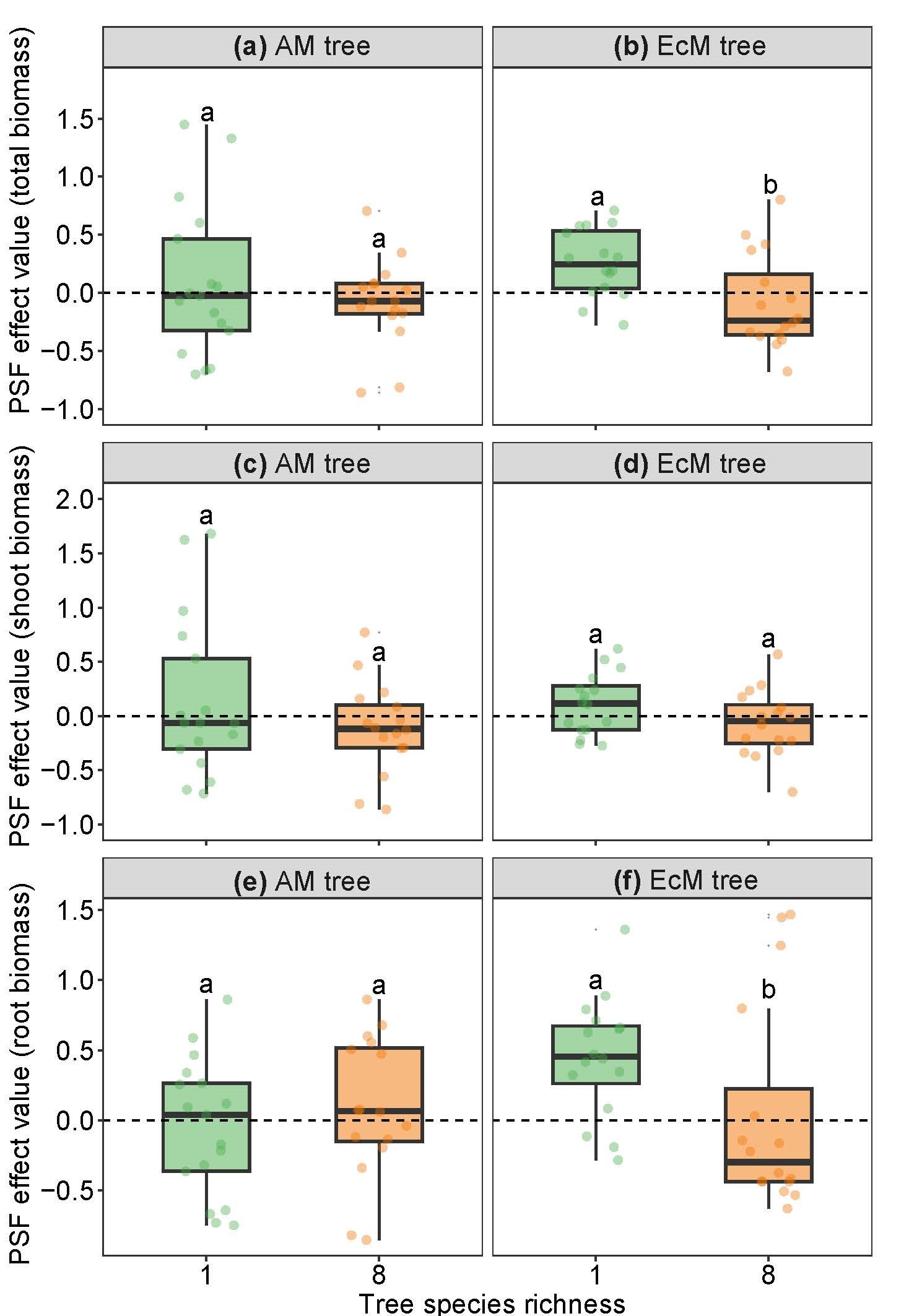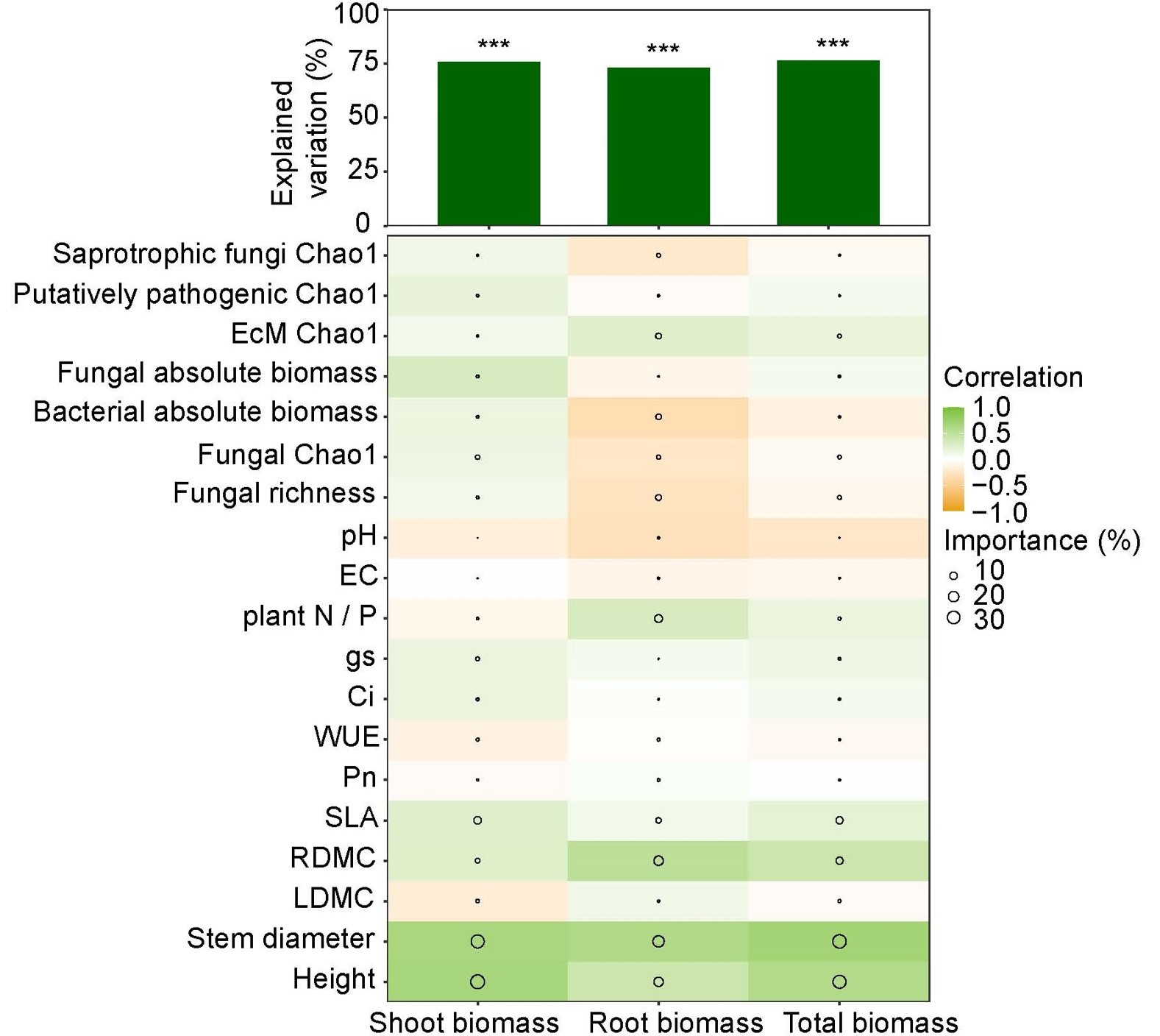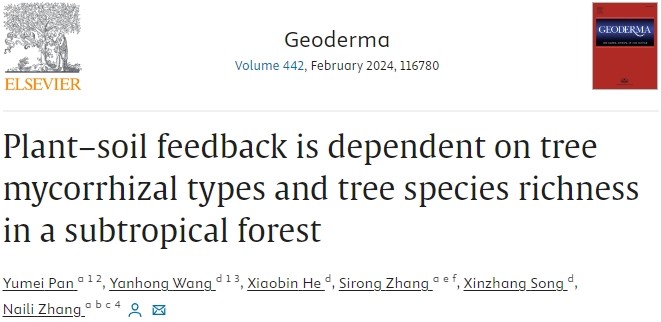Plant-soil feedback (PSF) is an important driver of plant species coexistence and diversity maintenance. However, it remains unclear how changes in PSF due to decline in tree species richness influence the performance of arbuscular mycorrhizal (AM) and ectomycorrhizal (EcM) tree species.
A PSF experiment was established with eight target tree species (four AM and four EcM tree species) by the research team led by Zhang Naili from Beijing Forestry University based on a subtropical forest Biodiversity-Ecosystem Functioning Experimental in China (BEF-China) platform (Figure 1). In this study, they investigated the response mechanisms of PSF in different tree species richness and tree species with different mycorrhizal types. They found that the interaction between tree species richness and soil fungal communities is a crucial factor in regulating PSF.

Figure 1 The experimental design and conceptual model
The results showed that the PSF of AM tree species were constant regardless of tree species richness, whereas the PSF of EcM tree species changed from positive to negative with increasing tree species richness, which is associated with the morphological and physiological plant traits of seedlings, as well as the response of soil functional fungal communities to tree species richness, especially the alpha diversity of soil pathogenic fungi and the complexity of fungal co-occurrence networks. This indicated that the close connection between plant traits and soil microbial communities jointly regulates seedling growth. Negative PSF of EcM tree species in a highly diverse plant community is bound to impose restrictions on their own seedling recruitment and adult abundance in the subtropical forest. Moreover, EcM tree species in diverse plant communities may adversely influence diversity effects on ecosystem productivity (Figure 2).

Figure 2 Response of PSF effect values of AM and EcM tree species to tree species richness
Furthermore, based on correlation and multiple regression models, the measured plant traits and soil physicochemical and microbial properties explained 75.8%, 73.2%, and 76.3% of the variation in shoot, root, and total biomass, respectively. In conclusions, the results provide insight into the critical role of PSF in regulating AM and EcM seedling performance, and how it interacts with tree species richness. Moreover, this study highlights the importance of soil pathogenic fungal diversity and fungal co-occurrence network complexity in modulating EcM tree PSF at different levels of tree species richness. These findings provide valuable insights into the linkage between PSF and tree species richness, which would stimulate our ability understanding effects of tree species richness on ecosystem productivity in natural subtropical forests (Figure 3).

Figure 3 The relative importance of plant traits, soil physicochemical properties and microbial properties to seedling biomass
Literature:
Yumei Pan, Yanhong Wang, Xiaobin He, Sirong Zhang, Xinzhang Song, Naili Zhang*. 2024. Plant–soil feedback is dependent on tree mycorrhizal types and tree species richness in a subtropical forest. Geoderma. 442: 116780. https://doi.org/10.1016/j.geoderma.2024.116780
Chinese report: https://mp.weixin.qq.com/s/T2qaeiXHtYWKv00L6pEYug

